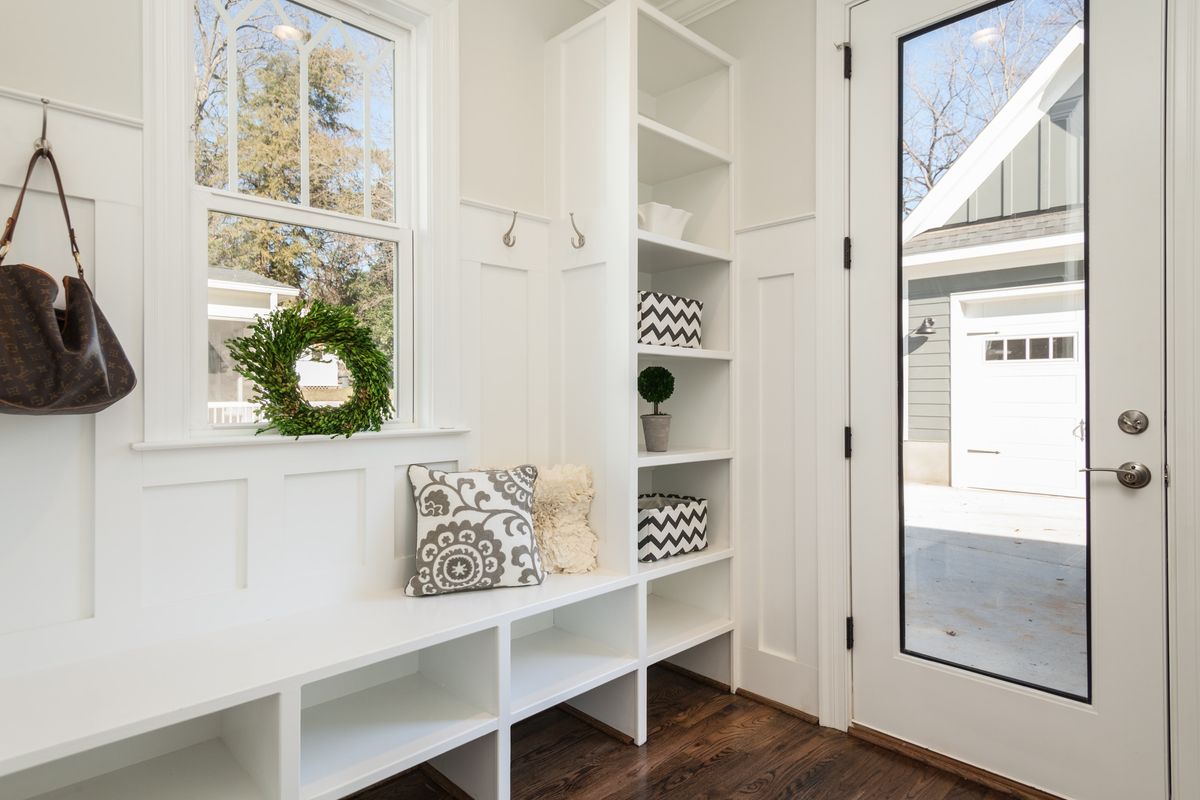Command shelving installations offer a versatile and efficient way to maximize space in your home. Whether you’re looking to add a touch of modernity or optimize small spaces, there are various shelving designs and organization techniques to consider. In this guide, we’ll explore creative shelving designs, space-maximizing strategies, and effective organization tips to help you make the most of your command shelving system.
Key Takeaways
- Choose shelving designs that complement your space and serve a functional purpose.
- Utilize vertical shelving to make the most of wall space in small rooms.
- Label and categorize items on your shelving system for easy access and organization.
- Regularly maintain and clean your shelving to keep your space looking neat and organized.
- Incorporate bins and baskets to store small items and keep your shelves clutter-free.
Get Creative with Shelving Designs

Floating Shelves for a Modern Look
Say goodbye to clunky brackets and hello to sleek sophistication with floating shelves. These modern marvels are perfect for creating a clean, uncluttered vibe in any room. They seem to magically hover against the wall, offering a chic platform for your books, plants, or art pieces.
Installation is a breeze, thanks to the versatility of Command Strips. These handy adhesives allow you to mount shelves without the need for drilling holes, which is especially great for decorating brick walls or rental properties where damage is a no-no. Just make sure to pick the right type of strip for your wall surface and the weight of items you’re planning to display.
If you’re shopping around, you might stumble upon Wayfair’s collection of Floating Modern Wall & Display Shelves. They’ve got a variety of styles that cater to all tastes, and the best part? Free shipping on most items, even the big ones. So, whether you’re in the market for a minimalist ledge or a statement-making bookshelf, there’s something for everyone.
Here’s a quick checklist to ensure your floating shelves are both functional and fabulous:
- Select the appropriate Command Strip for your wall type and shelf weight.
- Clean the wall surface thoroughly before applying the strips.
- Follow the instructions carefully for the best results.
- Regularly check the shelf stability and strip adherence over time.
Corner Shelving for Utilizing Every Inch
Don’t let those awkward corner spaces go to waste! Corner shelving can transform every nook into a functional storage area. These units are not just about making the most of the space; they’re also about adding a touch of elegance to your room. With their open shelf design, you get easy access to items, and the flexibility is top-notch, with shelves typically accommodating a variety of sizes.
For instance, some corner shelving units on Wayfair boast a height of 11.42 inches between shelves, which is perfect for those taller items that struggle to find a home. And let’s talk about aesthetics – a BIG BOY corner shelf, for example, comes with a smooth matte finish that’s just right for any interior. Plus, the internal mounting brackets are removable, making installation and adjustments a breeze.
Here’s a quick checklist to ensure you’re making the most out of your corner shelving:
- Measure your corner space accurately.
- Choose a shelf design that complements your room’s decor.
- Check for adjustable features like removable brackets.
- Look for shelves with sufficient height between levels for taller items.
- Consider the weight capacity to store heavier objects safely.
Custom Shelving for Personalized Storage Solutions
When it comes to tailoring organization for every space, custom shelving is your go-to solution. It’s all about creating a system that fits your life like a glove. Whether you’re looking to accommodate the varying heights of your family members or you need to make your storage accessible for all physical abilities, custom shelving has got you covered.
Here’s a quick rundown on how to get started:
- First, assess the items you need to store and categorize them by size and frequency of use.
- Next, measure your space meticulously. Remember, an inch can make a big difference!
- Then, decide on the materials. Think about durability, aesthetics, and weight capacity.
- Finally, sketch out a design or work with a professional to bring your vision to life.
Don’t forget to check out resources like a certain website that’s a treasure trove of DIY home decor and organization ideas. From adhesive picture hangers to homemade remedies, you’ll find a wealth of information to help you create a shelving system that’s as unique as you are.
Maximizing Small Spaces with Command Shelving

Vertical Shelving to Optimize Wall Space
When it comes to maximizing small spaces, vertical shelving is a game-changer. By taking advantage of wall space, you can store and display items without cluttering the floor area. Think of your walls as a blank canvas for storage; with the right shelving, you can transform them into a functional part of your living space.
Here are a few ways to incorporate vertical storage into your home:
- Wall-mounted shelves for books and decor
- Over-the-door racks for extra pantry items or accessories
- Wall-mounted furniture like desks or fold-down tables
- Hanging hooks and pegs for keys, coats, or kitchen utensils
Not only does vertical shelving help keep things off the ground, but it also makes cleaning a breeze. And speaking of cleaning, if you’ve got little artists at home, knowing some tips and tricks for removing crayon marks from your beautifully organized walls can be a lifesaver. With proper cleaning methods, you can keep your space looking sharp and tidy.
Under-Stair Shelving for Hidden Storage
Don’t let the space under your stairs go to waste! Transform your under-stair area into a hidden storage powerhouse with command shelving that fits snugly in this often-overlooked nook. Not only does it keep your belongings organized, but it also adds a touch of sophistication to your home.
Here’s how to get started:
- Measure the available space to determine the size of the shelves you’ll need.
- Choose shelving materials that complement your interior design.
- Install the shelves according to the manufacturer’s instructions for a secure fit.
Remember, under-stair shelving isn’t just about utility; it’s about enhancing your living space. With the right design, this area can become a seamless extension of your home’s aesthetic. Whether you’re storing books, displaying collectibles, or keeping household items out of sight, these shelves can do it all with style.
Over-the-Door Shelving for Extra Storage
Don’t overlook the space behind your doors; it’s prime real estate for storage! Over-the-door shelving systems are a game-changer for those pesky small items that never seem to find a home. With options like the Adjustable Over The Door Organizer, you can say goodbye to clutter. These nifty organizers come with varying basket sizes, ensuring everything has its place.
Here’s a quick rundown on how to make the most out of over-the-door shelving:
- Assess the available space and door clearance.
- Choose a shelving system that fits your door and your storage needs.
- Install the system following the manufacturer’s instructions – no tools or drilling required!
- Organize your items by category for easy access.
Remember, while these shelves are incredibly convenient, they’re not designed for heavy-duty storage. Keep it light, keep it organized, and you’ll be amazed at how much you can store without taking up any floor space. And for those concerned with safety, integrating fire-rated access doors in utility rooms or attics can protect your valuables and ensure compliance with fire safety regulations.
Organizing Your Command Shelving System

Labeling and Categorizing for Easy Access
Getting your shelving system in order is a breeze when you’ve got a solid labeling and categorizing strategy. Kick chaos to the curb by clearly marking each shelf’s purpose. This not only helps you find items quickly but also makes it a no-brainer when putting things away.
For instance, if you’ve snagged an EasyPAG Wall Mount File Organizer, you’re in luck because it comes with those handy nametag labels. Slap a label on and voila, you’ve got a designated spot for your files, magazines, or whatever floats your boat. And hey, if you’re feeling extra, why not color-code those labels for an added layer of organization?
Here’s a quick rundown on how to get your labeling game on point:
- Decide on a labeling system (color-coded, numerical, alphabetical, you name it).
- Create labels that are clear, concise, and large enough to read from a distance.
- Place labels at eye level or slightly below for easy spotting.
- Update labels as needed to reflect any changes in your storage system.
Remember, a little effort in labeling goes a long way in maintaining an organized space. And if you’re looking for more inspo, check out those warehouse rack labeling ideas on our blog. They’re not just for warehouses; they can totally up your home shelving game too!
Utilizing Bins and Baskets for Small Items
When it comes to keeping your command shelving tidy, bins and baskets are your best friends. They’re perfect for corralling those pesky small items that tend to get lost in the shuffle. Here’s how to make the most of them:
- Label your bins and baskets to save time and avoid the frustration of rummaging through everything.
- Choose transparent bins or ones with a peek-a-boo window to quickly identify contents.
- Stackable baskets maximize vertical space and keep things accessible.
Remember, the goal is to create a system that makes it easy to find what you need, when you need it. Regularly decluttering and reassessing your storage needs will keep your shelving system efficient and your space maximized.
Maintaining and Cleaning Shelving Regularly
Keeping your command shelving spick and span is not just about aesthetics; it’s about longevity and functionality. Regular maintenance ensures your shelves stay sturdy and reliable for years to come. Start by decluttering your shelves every few months. This isn’t just about physical items; consider this an opportunity to declutter and streamline your digital space for increased efficiency.
When it comes to cleaning, simplicity is key. A mild detergent and warm water will do the trick for most shelving surfaces. For a deeper clean, natural cleaners like baking soda and vinegar can work wonders, especially in tricky spots like corners and edges. After cleaning, deodorize with baking soda to keep your shelves smelling fresh.
Here’s a quick checklist to keep your shelving in top shape:
- Dust shelves weekly
- Declutter regularly
- Wipe down with mild detergent monthly
- Use natural cleaners for deep cleaning sessions
- Deodorize with baking soda to keep things fresh
Remember, a little bit of regular care can go a long way in keeping your command shelving system looking great and functioning perfectly!
Frequently Asked Questions
How do I choose the right command shelving design for my space?
Consider the style and functionality you need, and choose between floating, corner, or custom shelving options.
Can I install command shelving in a rental space without causing damage?
Yes, command shelving is designed to be damage-free and easy to remove without leaving marks on the walls.
What tools do I need to install command shelving?
Basic tools like a level, drill, screws, and anchors are usually required for a successful installation.
Are command shelves sturdy enough to hold heavy items?
Yes, command shelves are designed to hold a significant amount of weight when properly installed according to the manufacturer’s instructions.
How can I maximize the storage capacity of my command shelving system?
Use vertical shelving, under-stair shelving, and over-the-door shelving to make the most of your available space.
How should I maintain and clean my command shelving regularly?
Dust shelves regularly, wipe them down with a damp cloth, and avoid placing excessive weight on them to keep them in good condition.
